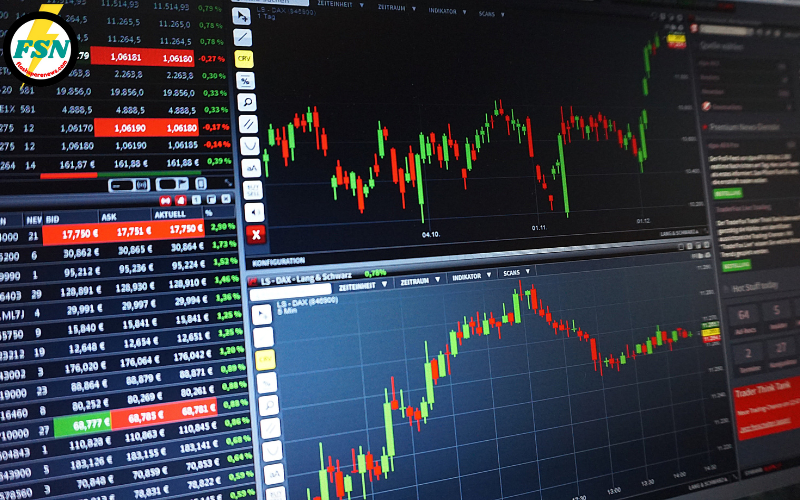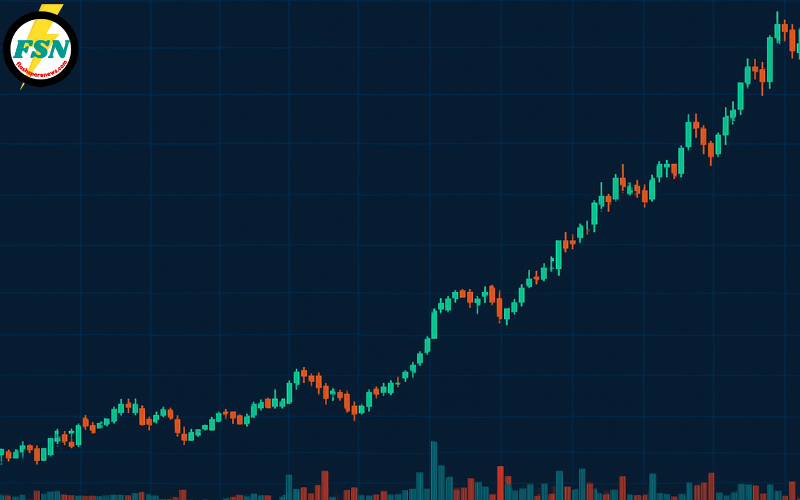Indian Stock Market Braces for Turbulence as Trump Tariff Deadline Nears — Experts Advise Caution
As the 90-day pause on Donald Trump’s proposed tariff implementation draws to a close, the Indian stock market braces for a period of uncertainty and volatility. Market analysts and institutional investors are closely monitoring global economic signals, particularly U.S. trade policy developments, which have historically triggered ripple effects across emerging markets. The Indian Stock Market Braces for a potentially disruptive phase as global cues and geopolitical tension heighten risk appetite and influence investment behavior.
The looming tariff decision by Trump has cast a long shadow over equity sentiment globally. In India, investors are becoming increasingly cautious, especially as foreign institutional investors (FIIs) have slowed their aggressive buying, waiting for clarity on the macroeconomic front. Amid this uncertainty, the Indian Stock Market Braces for potential capital outflows and risk-off trades, which could pressure valuations in the short term.
Indian Stock Market Braces for Global Impact as FIIs Tread Lightly
The most direct impact of Trump’s tariff policy may be on the U.S.-China trade relationship, but its ripple effects are undeniable in emerging markets like India. As the Indian Stock Market Braces for global headwinds, market participants are pricing in the uncertainty. The benchmark indices, Nifty 50 and Sensex, have remained volatile in recent sessions, with traders preferring defensive sectors such as FMCG and Pharma over cyclical bets like infrastructure and auto.
FIIs, who were net buyers over the past few months, are now showing signs of restraint. Market data reveals that the Indian Stock Market Braces for a liquidity crunch, as foreign flows begin to ebb. Investors are shifting their attention to domestic fundamentals and earnings revisions, which now play a crucial role in portfolio rebalancing.
Meanwhile, domestic institutional investors (DIIs) continue to provide support to the market, but the lack of global confidence means they, too, are turning selective. The Indian Stock Market Braces for a more cautious environment, with value picking and sector rotation becoming the dominant themes.
Indian Stock Market Braces for Policy-Led Volatility Ahead of General Elections
Adding to the uncertainty is the upcoming general election in India, expected in the next few quarters. As political parties ramp up campaigning, investors remain alert to fiscal populism and policy shifts. Historically, election cycles in India have brought heightened market activity, both positive and negative. The Indian Stock Market Braces for policy-led volatility as budgetary announcements and regulatory cues become key triggers.
The central government’s stance on capital expenditure, subsidies, and tax reforms will weigh heavily on sectoral indices. Analysts are recommending a wait-and-watch approach, advising investors to stay invested but avoid aggressive new positions. The Indian Stock Market Braces for an inflection point where domestic policy and global economics intersect.
In addition, state elections in several regions will serve as bellwethers for the central government’s popularity. Political uncertainty, particularly related to fiscal discipline, could introduce more volatility. Infrastructure, agriculture, and energy sectors are expected to be under the spotlight, and investors are carefully analyzing party manifestos and their impact on corporate India.
Indian Stock Market Braces for Corporate Earnings Revisions Amid Global Pressures
As earnings season approaches, companies across sectors are preparing to report their quarterly results. Analysts expect earnings to be impacted by rising input costs, global demand slowdown, and currency fluctuations. The Indian Stock Market Braces for mixed earnings surprises, especially in export-driven sectors like IT, textiles, and specialty chemicals.
Brokerages have started trimming their EPS estimates for some large-cap stocks. This has increased valuation concerns and added further pressure to indices. The Indian Stock Market Braces for a crucial phase where earnings performance could either support or derail the ongoing consolidation pattern. Investor focus is shifting towards management commentary and forward-looking guidance rather than past numbers.
Companies in the manufacturing and capital goods sectors have flagged rising raw material costs as a concern. Margins may take a hit, especially in highly competitive industries. On the other hand, consumer durables and discretionary spending remain resilient, providing some cushion to earnings. The Indian Stock Market Braces for divergence in sectoral performance that could shape investor strategy moving forward.
Indian Stock Market Braces for Sectoral Divergence and Defensive Rotations
With macro uncertainties rising, a shift in sectoral leadership is becoming evident. While banking and financials have shown resilience, sectors like IT, metals, and real estate have underperformed. The Indian Stock Market Braces for sectoral divergence, with investors allocating more capital to low-beta, high-dividend yield companies. FMCG majors are witnessing renewed interest, while utility and healthcare stocks are also seeing inflows.
Mid-cap and small-cap indices have underperformed their large-cap peers due to heightened risk aversion. However, value investors see this as a potential bottoming-out phase. The Indian Stock Market Braces for a gradual rotation back into broader markets once clarity emerges on the geopolitical front.
Portfolio managers are advising a barbell approach—balancing defensive sectors with select high-growth opportunities. Energy stocks are drawing interest as crude oil volatility presents both risk and opportunity. Additionally, the auto sector is seeing scattered recovery signs, with electric vehicle players gaining investor traction.
Indian Stock Market Braces for Technical Challenges and Support Levels in Focus

From a technical standpoint, the Nifty 50 has key resistance at 24,500 and support near 23,900. The Indian Stock Market Braces for crucial test levels in the coming sessions. A breakout above resistance could reignite bullish momentum, while a breach below support might trigger fresh selling.
Momentum indicators such as RSI and MACD are showing signs of consolidation, while volumes have remained subdued. Traders are advised to maintain strict stop-loss levels and avoid leverage. The Indian Stock Market Braces for a technically sensitive phase where even small news triggers could cause sharp index movements.
Technical analysts are also watching broader market breadth. A declining advance-decline ratio signals underlying weakness, even when headline indices stay afloat. Derivative positions also indicate cautious sentiment, with rising open interest in put options and unwinding of bullish call spreads.
Indian Stock Market Braces for Rupee Sensitivity and Crude Oil Risk
Another important macro element is the performance of the Indian rupee against the dollar. Any sharp depreciation could impact inflation-sensitive sectors and reduce foreign investor confidence. The Indian Stock Market Braces for rupee sensitivity, especially if crude oil prices spike due to global conflict or supply constraints.
India, being a major oil importer, remains vulnerable to energy shocks. Brent crude hovering above $85/barrel has already caused concerns among economists. Should prices rise further, it could force the Reserve Bank of India to revise its monetary policy stance. The Indian Stock Market Braces for possible rate recalibration, which would weigh on interest-rate-sensitive sectors.
Additionally, higher oil prices could worsen the current account deficit, further pressuring the rupee. Sectors such as aviation, paints, and logistics are especially vulnerable to rising crude costs. Hedging strategies and selective allocation to oil-linked companies are being recommended by fund managers.
Indian Stock Market Braces for Global Central Bank Moves and Fed Watch
Investors globally are also keeping a close eye on the U.S. Federal Reserve. Any surprise hike or change in stance could cause a flight to safety. The Indian Stock Market Braces for central bank coordination and policy shifts that may tighten global liquidity. A dovish Fed could support emerging market equities, while a hawkish surprise could spark capital outflows.
Traders are factoring in the FOMC meeting minutes and upcoming inflation data from both the U.S. and Europe. The Indian Stock Market Braces for synchronized monetary tightening that might dampen risk appetite globally.
Central banks in Europe and Asia are also being closely watched. Japan’s yield curve control policy and the ECB’s inflation battle are influencing global bond markets. Indian bond yields have started to climb, reflecting inflationary expectations. This could reduce the attractiveness of equities in the short term.
Indian Stock Market Braces for Retail Investor Behavior and Mutual Fund Trends
The growing influence of retail investors in the Indian stock market cannot be ignored. With over 150 million demat accounts now active, retail sentiment plays a significant role in short-term trends. The Indian Stock Market Braces for behavioral shifts as retail investors become more cautious amidst mixed signals.
Systematic Investment Plans (SIPs) continue to see inflows, indicating long-term faith in equities. However, redemptions from thematic and sectoral mutual funds suggest a move toward broader-based diversified strategies. Fund managers are shifting away from speculative bets and into quality companies with robust balance sheets.
New-age investors are relying on real-time data and social media sentiment to make decisions. Platforms like X (formerly Twitter), Telegram, and YouTube influencers are shaping stock trends. The Indian Stock Market Braces for increased retail activity in mid-cap and penny stocks, raising concerns around speculation and volatility.
Indian Stock Market Braces for Global Risk Factors and Safe-Haven Demand
In addition to the Trump tariff deadline, geopolitical developments in Eastern Europe, the Middle East, and Asia remain in sharp focus. Any escalation in conflict zones could lead to a surge in safe-haven demand for assets like gold, U.S. Treasuries, and the dollar. The Indian Stock Market Braces for cross-asset volatility and reallocation of global portfolios.
Gold prices have already started inching up, and Indian investors are increasing their exposure to sovereign gold bonds and gold ETFs. Market experts recommend gold as a hedge against equity volatility. The Indian Stock Market Braces for a tug-of-war between risk and safety that may influence near-term direction.
Conclusion: Indian Stock Market Braces for Uncertainty — Stay Nimble, Stay Informed
In summary, the Indian Stock Market Braces for a critical convergence of global and domestic triggers. Trump’s tariff deadline, elections, central bank decisions, and corporate earnings will all play a part in shaping the near-term outlook. Investors are urged to adopt a cautious yet flexible strategy, keeping an eye on macro indicators, technical patterns, and sector rotation.
As the Indian Stock Market Braces for short-term volatility, long-term fundamentals remain intact. Smart investors are staying invested while rebalancing portfolios towards quality, defensive plays. Whether you’re a trader or long-term holder, one thing is clear: the Indian Stock Market Braces for a defining moment in 2025.


